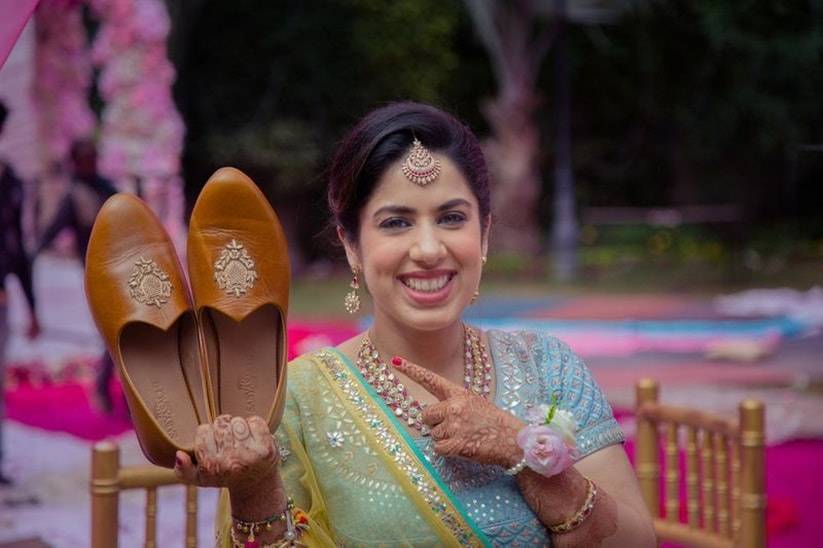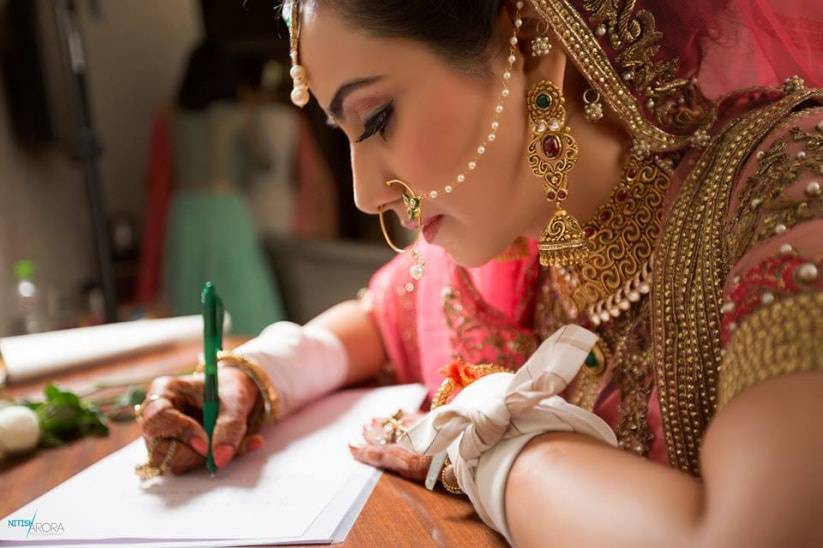Shaadi Shastra: Significance of Kanyadaan and Modern Day Re-interpretations
Let's take a look at importance or significance of Kanyadaan and alternates for those who'd prefer otherwise.


A Hindu Indian wedding is not just two people tying the knot. It celebrates relationships, family bonds, togetherness, and deep-rooted spiritual importance. While a Hindu wedding consists of days of rituals and ceremonies, the moment of kanyadaan or kanyadaanam custom makes everyone emotional and teary-eyed.
While everyone knows about kanyadaan as we see it every day in Indian shows and movies, the meaning behind it is barely understood through these mediums. Why does it take place, when was it started, what is the history behind it, and many more questions just come to our minds and are lost with time until we again witness or hear about a kanyadaan.
If knowing everything about the meaning of the seven wedding vows intrigues you, we are sure that understanding Kanyadaan's meaning will make you feel highly of this custom that brings the bride and her parents closer. So here’s everything you should know about the Kanyadaan ritual.
In this article:
- What is the meaning of Kanyadaan?
- How is Kanyadaan performed as a ritual?
- Who performs Kanyadaan?
- Is Kanyadaan needed to complete a Hindu marriage?
- What are the alternatives to Kanyadaan?
What is the meaning of Kanyadaan?

Kanyadaan is a Sanskrit word in which 'Kanya' signifies a girl or daughter, and 'Daan' means to donate. Simply put, Kanyadaan implies donating the daughter to a groom in holy matrimony. A deeper-rooted spiritual meaning of Kanyadaan states that during a wedding, the groom is considered to be an incarnation of Lord Vishnu, and the bride is considered to be a form of Goddess Lakshmi, the deity of wealth and prosperity.
The bride's parents are lucky to be blessed with the opportunity to initiate the union of the two gods through this ceremony, and their sins are forgiven with this religious donation.
Simply put, the parents give away their most prized possession, their daughter, to the groom as a donation and a gift of wealth, prosperity and a long life.
How is Kanyadaan performed as a ritual?

The kanyadaan ritual takes place after the Varmala (exchanging of garlands). During the ritual, the bride's father places her right hand in the groom’s right hand. After that, the mother of the bride pours sacred water on the palm of the father (of the bride), which eventually flows through the daughter’s and the groom’s hands. The Pundit Ji chants Vedic ritual hymns or kanyadaan mantras throughout the procedure. The groom will then swear to be loyal and to devote his love to the bride for all his life and sing a Vedic ritual hymn. This is the standard method of doing the kanyadaan. But keeping in mind the diversity of people in India, there are certain diversions to the technique as well. Sometimes, coconut or other things like betel leaf, rice, etc., are kept in the bride’s hand (followed by the groom’s), and water or milk is poured over it.
Every community has its own way of doing it, but the essence behind it remains the same for all. Every parent giving away their daughter during the kanyadaan feels similar emotions and feelings at that moment.
Who performs Kanyadaan?

Kanyadaan also refers to the bride's parents' acceptance of the groom as her life partner. This tradition is a beautiful amalgamation of bittersweet emotions, wherein the father of the bride symbolically hands over his daughter's responsibility to the groom with lots of hope and expectations and, of course, his blessings for the new couple's long, blessed life together.
Is Kanyadaan needed to complete a Hindu marriage?

Legally, as per the Hindu Marriage Act, a kanyadaan is not an essential ceremony to certify the completion of the marriage between two consenting adults. If we talk about the Vedas, there’s hardly any evidence that Kanyadaan was mentioned there.
According to the Vedas, the bride's consent was primary, and the couple entered into the union of marriage as equals. So, from where does the concept of Kanyadaan come into existence? It’s from Manu Smriti texts and is a comparatively new ritual. As Hinduism eventually accepted the Manu texts and its teachings, the position of women changed somehow. A male guardianship was deemed to be necessary for her being. So, the father was the guardian when she was unmarried, and she was carried down to the husband after marriage. From here, the kanyadaan is rooted in a vital ritual based on the texts, and it is a very emotional moment for the family as they give away their most prized possession. The ‘kanyadaan’ is also said to be the greatest gift from the bride’s father to the groom.
What are the alternatives to Kanyadaan?

As times change and women are seen through a different lens than the traditional weaker one, many people have their objections to the concept of kanyadaan. Many people today find this concept of ceremonial and symbolic donation regressive to women. This objection has led to whether any alternatives can be performed as part of the wedding rituals instead of the ritual of kanyadaan.
Interestingly, a handful of alternate ceremonies of 'Daan' can be considered symbolic alternatives to the ritual of kanyadaan. Let's look at these alternates and how they can be performed in the Hindu wedding ceremony.
Gou-daan
In Sanskrit, 'Gao' means cow, the most sacred and holy animal in Hinduism. And so, instead of Kanyadaan, people also consider giving away a cow to the groom as a spiritually aligned donation of the highest power. This way, the honour of donating something pure and spiritual, such as a goddess-like daughter, doesn't get compromised, and the ritual gets followed with the complete support of the priest's approvals in check.
Gandharva
Instead of the bride's parents giving away their daughter to the groom, this interesting concept of Gandharva has come into existence. It is getting recognition among new-age brides and grooms, who also look at alternatives of equality in wedding rituals. The concept calls for the bride and the groom to give themselves to each other independently, without seeking anyone's permission.
The Kanyadaan meaning and ritual are among the most sacred rituals that bind two people into becoming one whole, becoming a couple, and living the rest of their lives together. It is the very ceremony that officiates that the father announces that he now gives his daughter to her husband, her guardian for life. Now that you have read about this sacred tradition and ritual rest assured that this will be one of the most emotional journeys you and your parents will embark upon. Enjoy your journey, and make the most of your last few days with your parents!
Also Read:
1. The Complete Puja Samagri Guide
2. The Significance of Ganesh Puja Before the Wedding










